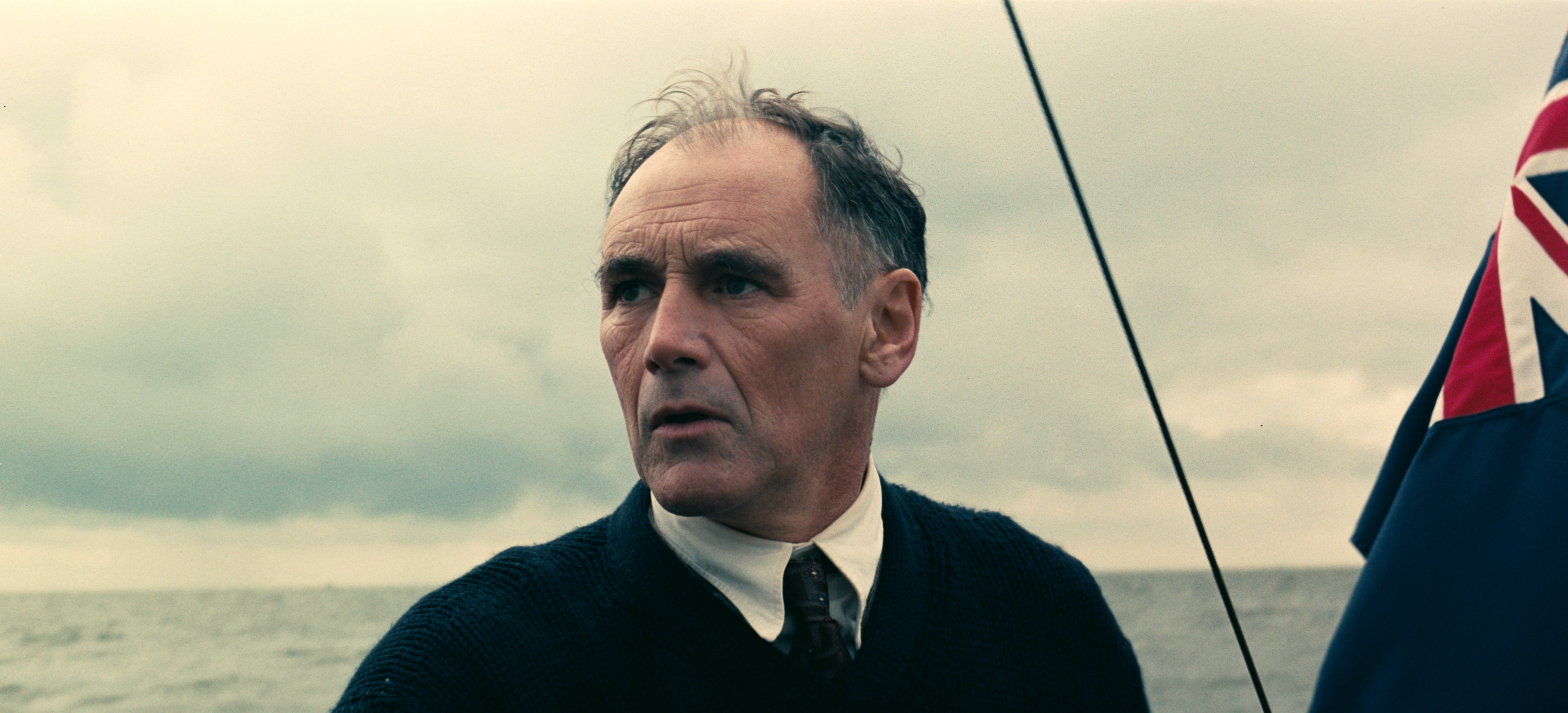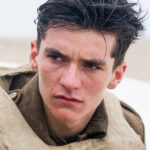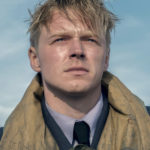Mark Rylance, 57, is a well-respected actor, theatre director, and playwright. Known for acclaimed performances on stage and screen, he won an Academy Award and BAFTA Award in 2015 for his performance in Steven Spielberg’s film, Bridge of Spies. In Christopher Nolan’s Dunkirk, he plays Mr. Dawson, a civilian mariner whose ship the navy requisitions to help rescue soldiers across the English Channel. He spoke to Senior Editor Paraag Shukla of World War II magazine about Dunkirk, which opens in theaters on July 21, 2017.
Christopher Nolan told me that for British people, the story of Dunkirk is a massive part of the culture. How familiar were you with this particular story prior to coming aboard?
I’ve always been a bit obsessed with the Second World War since I was a kid, particularly that film, Battle of Britain. And one of my greatest friends was a tail gunner on Lancaster and Halifax bombers and amazingly survived 30 missions. My grandparents were in Japanese prisoner-of-war camps. So I’ve spent many, many hours talking with people connected with it.
The Dunkirk story was always the shining example in people’s memory of a time when England was much more together. The common, identifiable enemy of fascism really brought people together, and it was a time when civilians, in their efforts to save people during the bombing in London and in Dunkirk, played an essential role in the success of the war.
From my research, Churchill only expected to get 20-30,000 men back from Dunkirk, which would have been a pittance of our army. With the help of the civilians, we managed to get 340,000 back. Also with the help of the Channel, which was remarkably still on two of those days. Fisherman at the time said they hadn’t seen it so still in 50 years. And if it hadn’t been so still, many more men would have drowned.
This story is unusual, in that we typically see military characters rescue civilians in some predicament. This turns that convention on its head, with regular civilians banding together to come to the aid of the military.
Exactly! And for people interested in history, the Imperial War Museum in London have such extensive records. I was able to go and listen to wonderful audio tapes of interviews that they carried out with people like Mr. Dawson, the character I play. Long, hour-long interviews explaining what they’d experienced. That was really evocative and a wonderful resource.
In those interviews, I imagine those people talk about things that one cannot find in history books.
Oh, yeah—absolutely. And I’ve realized as I listened to more of them that Chris Nolan has gone and listened to all those, too. He had chosen very carefully real events and then distilled them into this marvelous impression and experience of the day.
Did you have a chance to explore and develop the character of Mr. Dawson? Or did Chris already have a particular set of traits in mind for him?
Chris is very particular and very much in control of everything as a director, but he didn’t micromanage any of the scenes. He really much responded to how we played the dialogue he had written. The interesting thing about this film is that it doesn’t have 20 minutes of exposition and back story.
What we do know about Mr. Dawson is that he has a wooden motor boat, which I assume had never been across the Channel before. It was for going out with his family in the Bay of Weymouth, which is a town in southwest coast of England and maybe going along the beautiful coast. It is a pleasure boat that was built in the 1930s and was therefore relatively new at the time. He has a son, who has a friend who hops on the boat.
From my research, Churchill and the government was so overwhelmed by the incredible speed of the German army and, unfortunately, the lack of preparation of the French. They didn’t tell the English public just how bad it was, so these civilians who went across had very little idea what they were going into. I think they were just told that there were some men on the beach that needed bringing home, but they weren’t told they were going to be shot at and bombed.
Chris Nolan prefers practical effects over CGI, which must have been quite an experience. What was it like to be on the ship, filming on the Channel and in the Netherlands?
It was fantastic. The airplanes that flew over us were all real. To have those planes—which I’ve adored since I was a boy—roar over you, 40 feet over your head, and then do this wide, five-mile sweep and come around again—and the fire in the water and the big boats being attacked around us. That was absolutely thrilling.
We had to film on an inland sea in the Netherlands because the Channel is normally too rough. The first couple of days we filmed off of the actual beach in Dunkirk. My wife and I walked along that beach and thought just how desperate and vulnerable those poor men were there. You can see England on a clear day, so to be so near to home and yet so far away must have been particularly torturous. A lot of the boats that were sunk and the poor souls that lost their lives are still in the sand underneath the water there—we were filming right over their graves. To be in that little boat, in the same place where, decades earlier, the actual boats had been to rescue those men…it was one of the most powerful things I’ve experienced in my filming career.
What surprised you the most about the history and the experience of making this film?
Of course, you know those 400,000 men are there without water or food for a couple of days. But then when you read about the men defending the perimeter. That kind of fighting with bayonets, grenades, the house-to-house fighting—so vicious. I shake when I read these books, it’s just so terrifying. Already there were examples of the killing of prisoners in that perimeter fight. It was a very fierce battle to defend the beaches. I didn’t know about that.
And although Americans may not know much about this event, it’s an essential film about people looking to get home. Almost like in Greek times, the story of Ulysses trying to get home after the Trojan War. It’s a very essential situation of men trying to get home and facing mortal peril if they cannot.
We often talk about heavy subject matter, so we’d like to end on a lighter note with a creative question. If it was 1940 and you had to join a military branch, which would you choose?
Right off the top of my head, the Royal Air Force. It was ferociously dangerous. It’s curious why certain parts of history call to one so much. I found myself bursting into tears when I saw the aircraft. Just very moved by it—inexplicably moved by it.
There is one moment in the film in which your character says about the Shivering Soldier character— “he may never be himself again.”
Yeah, isn’t that a nice line?
There are also very beautiful examples of everyone working together—even the most humble “unimportant” person playing their part. One might’ve asked, “what difference is it going to make if I take my boat across?” But because a lot of people did do it, it made a huge difference. There was even a man in a canoe! There is a report of people shouting down from a big destroyer, asking “what the hell are you doing here?” And the man pointed to the back of the canoe and said, “I have room for one more.” ✯
Film Recon is a web series by Paraag Shukla, Senior Editor of World War II and Aviation History magazines at HistoryNet.
Dunkirk opens in theaters on July 21, 2017.
Check out our other Film Recon interviews for Dunkirk:
Christopher Nolan — Director, Writer








